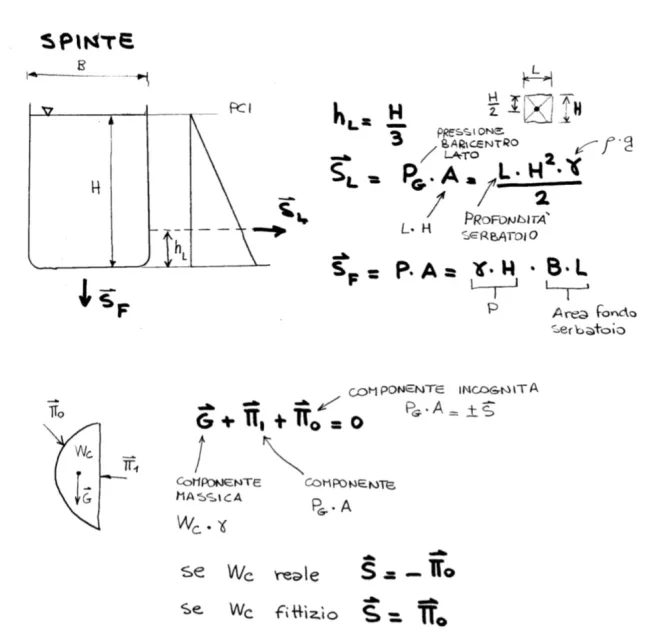We remain in the context of a pre-dimension and above all we say that I am expressing opinions. So I might be wrong.
begin to assess the maximum traction (we prevent seismic speech and horizontal loads). in reality is placed about 90% of the depth and therefore about 6.5m deep.
without wanting to do pharmacists you can safely consider the maximum traction at the bottom.
the traction force of a parallel is therefore: ps*h*r (highly oversized) where with ps idium the specific weight, h the total height of the liquid and r the radius of the tank (in fact I applied the famous formula of mariots).
if you have water then the maximum strength will be: 10*7*(2,9/2) = 101.5 kn/m
normally for variable loads of the tanks the amp coefficient of the loads is 1.3 and not 1.5.
the safety coefficient for steel is usually 1,05 for current elements and 1.25 for knots and for particularly weakened parts.
if I don't remember the asi304 has a yield value of 190 n/mm2.
therefore, for a unitary strip and admitted not to use reinforcements and considering not to have particular dynamic amplifications:
minimum thickness = 1.3*101.5 / (190/1,05) = 0,73 mm.
But I'd increase it a bit. by making some speculation you might think of increasing it at least 2mm in the parts where dynamic effects are important (type in a hopper even if it is not your case) and increasing it by 1mm to consider the amalgamation.
I mean, maybe I wouldn't go down under the total 2mm thick. but it's my consideration.
try to search on the web some company that makes tanks and see if you find the indications of the thicknesses so much to understand if they increase them for reasons other than structural calculation.
if you want to put a reinforcement you can decide to assign the traction force entirely to him or you may decide to share it proportionally to stiffness or areas.
I admit, however, that I have no experience in the sizing of this type of tank.
I usually calculated tanks of a decidedly larger size but with structure in c.a. / c.a.p.
It is probable that for a steel tank it is necessary to foresee horizontal and vertical reinforcements both to contain the thicknesses and both to avoid any phenomena of instabilization (it is not to exclude that under the weight precisely with too reduced thicknesses you can have this problem). it could also be worth doing a part of the tank with the maximum thickness and the remaining with a reduced value (to be calculated at the altitude where you decide to change thickness).
However if you want to deepen the seismic speech try to take a look here:
Il calcolo dei serbatoi è un argomento più volte richiamato sui forum. Se si affronta l'argomento con rigore matematico, cercando di capire e risolvere le equazioni di Bessel, penso che non si faccia molta strada prima di ingripparsi. Voglio qui, illustrare il metodo semplificato che che abbiamo...
ingforum.it


